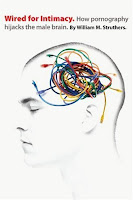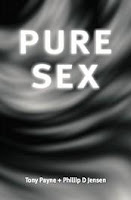Review: Wired for Intimacy
 William Struthers’ Wired for Intimacy: How pornography hijacks the male brain is one of those books that can only be reviewed in comparison. In this case to Allan Meyer’s From Good Man to Valiant Man. Both books deal with the topic of sexual integrity in men. Both books take a holistic approach – dealing with pornography and sexual addiction as a combined spiritual, psychological, and neurological issue. This approach, in both books, is a very helpful one as it allows men to get a handle on the real value and tangible outcome of what it means to discipline oneself and take every thought captive.
William Struthers’ Wired for Intimacy: How pornography hijacks the male brain is one of those books that can only be reviewed in comparison. In this case to Allan Meyer’s From Good Man to Valiant Man. Both books deal with the topic of sexual integrity in men. Both books take a holistic approach – dealing with pornography and sexual addiction as a combined spiritual, psychological, and neurological issue. This approach, in both books, is a very helpful one as it allows men to get a handle on the real value and tangible outcome of what it means to discipline oneself and take every thought captive.
Struthers is better than Meyers’ in a number of areas. As a professor of psychology and a lecturer in behavioural neuroscience he is certainly more qualified when it comes to unpacking how negative neurological pathways are built up and then reinforced by pornographic habits.
“This is how a pornography addiction and sexual compulsion is built form scratch. It involves the visual system.. the motor system… the sensory system… and neurological effects of orgasm (sexual euphoria from opiates, addictive dopamine in the nucleus accumbens and reduced fear in the amygdale). They have now begun to to store this pattern as a reinforced neurological habit.” (Page 99)
His applied theology is also better. His chapters on masculinity (“Made male in God’s image” and “Masculinity”) are a more helpful exploration than Meyer’s eisegetic four-faces ox-lion-eagle-man imagery.
But when it comes down to the “so what do I do with it?” question – this is where Struthers is weak and where Meyers’ pastoral and discipling heart shows its strength. For instance Struthers’ dealing with masturbation begins with the pastoral equivalent of “don’t do it or you’ll go blind”
“Men who compulsively masturbate (more than 2-3 times a week) can suffer form depression, memory problems, lack of focus, concentration problems, fatigue, back pain, decreased erections, premature ejaculation, and pelvic or testicular pain” (Page 169) [I wonder if the same is said of men who have sex more than 2-3 times per week?]
And while he does move beyond this it is mostly description rather than prescription of help. This is typical throughout the book.
So in the end, go to Struthers for a better understanding, go to Meyers for some thoughts as to how to help someone (or yourself). Would love to see the book that merges the strengths of both.







